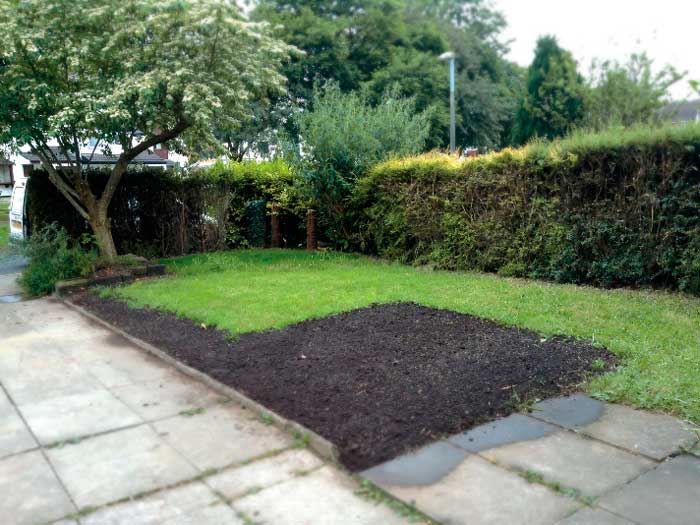
Preparing for Spring
by Northern Life
Now that we are getting through the worst of the winter and perhaps drying off a little, spring is hopefully on its way so it is a good time to look at preparation for the coming months and season. There are many jobs that are ideal for this time of year while the temperatures are still low and there isn’t much growth about so we are going to focus on a few of the main tasks that will give us a head start for the coming season. These are tasks that will tidy and reorganise the garden while giving the plants in particular the best chance to make a good show over the year. We are going to have a look at spring pruning, dividing perennials, ground preparation and planning.
So without further ado let’s start with spring pruning – how do you identify it? How do you carry it out? what does it do? I hear you ask. Well to begin to identify what needs pruning at this time of year, use the old rule of thumb and prune after flowering so anything that has flowered during the last couple of months will need pruning eg. mahonia, viburnum bodnantense; also any plant that has stems with winter interest e.g. dogwood, pheasant berry; and finally any plant that isn’t flowering or about to flower and that needs tidying up or reducing in size e.g. conifers, evergreens, summer/autumn flowering shrubs. The methods of pruning will vary according to the type of plants but as a general guide: a plant that has flowered will need dead heading and usually the flowering shoots reducing, plants with winter interest stems will need hard pruning cutting the stems back to near the ground if not ground level, plants that need tidying or reducing will just be a case of trimming or cutting the stems to the shape and size that you are happy with. There will also be plants that cross over these groupings e.g. buddleja, rambler roses which flower in summer but require hard pruning reducing the stems by at least two thirds.
The next task to consider is dividing herbaceous perennials so that you can reduce the size of the clump, create more of the same plant and move the plants more easily around the garden. First find your herbaceous perennial and dig it out with as big a root ball as possible. This is because some perennials have big solid root systems e.g. hosta, astilbe; whereas other perennials have thin fibrous root systems e.g. lamb’s ear’s (stachys), dianthus; then there are others with bulbous roots e.g. paeonia, crocosmia; so the type of root system will depend on how you need to divide the plant. With the thick root systems you simply slice through with a spade dividing into as many pieces as you require or the size of piece you want. This can also be done using two forks back to back
then prize the handles apart to divide the clump and repeat the process to create the required number of divisions. On a plant with finer roots the process is a lot simpler by just pulling the plant apart or cut through with a spade as the roots will easily separate. The difficult bit will be making sure each clump has some roots. The plants with bulbous roots are a mixture of the two as some will simply pull apart and others will need a spade or fork to divide them. Once you have your required number or size of clumps you can replant a clump where the original plant came out and/or
distribute the plants around the garden.
An important part of spring preparation is ground preparation because the ground is where the majority of plants grow from – with the exception of wall dwellers and other similar plants – so it is important to make sure that the conditions are the best they can be for the plants whether it is the nutrients in the ground, the make-up of the growing media or the mulches that will prevent weed
growth and therefore competition for space nutrients and light. The method of preparation will again depend on the plants growing in the ground, what is already on or in the ground and the location of the ground. If the plants in the ground need nutrient rich soil e.g. herbaceous perennials, woodland plants, it is worth piling in loads of compost, manure or other bulky organic matter to enrich the soil. However if the plants don’t require much nutrients but need well drained soil e.g. alpines, many herbs then attention is needed on the make-up of the soil and adding grit or grit sand to the soil will aid drainage so it is worth finding out what sort of soil your plants require. Likewise if the ground is in a particularly difficult place to get to, then it is best to have plants that can live without much attention e.g. bulbs, alpines or marginal plants and bog plants if the ground is particularly wet or is affected by a body of water or water course. The area of ground may also be in an area which is badly affected by weeds e.g. by a road or field where weed seeds can easily blow in; or you yourself may not be able to manage the weeds, in which case a weed suppressing mulch is needed which is any material that has no way of encouraging plant growth within it or is ‘sterile’ – usual materials are bark chips, gravel or slate chips and even cocoa chips. However other more unorthodox materials such as shredded paper and old carpet have been used on less ornamental borders like vegetable plots.
Lastly it is worth taking another look at planning for the garden. Tthis is a very important and often overlooked area of gardening so it is important to keep an eye on it. While doing all the practical preparation, some time should be taken to plan for the coming season. Most of your planning should be done for summer as it is best to look two seasons ahead so it is autumn planning now. However, if you are not this far ahead worry not as the principles are much the same – you should look at how the garden is laid out, what plants are in the garden and where they are, whether the garden is in a style that suits you and whether the garden style suits the location of the garden. For summer it is simply a matter of making sure that your spring preparation goes to plan and you keep the plants and the garden at their best for the time when you can be out most to enjoy them, then come autumn time it is again a matter of looking at what, if any, changes need to be made and how to go about them along with all the other tasks that we have previously looked at.
However I have once again run out of space so I hope this insight into spring preparation was a useful one and join me once more next time when we take a look at summer maintenance.
It just remains to say the most important bit – I’m Geoff Moss – the only moss you want in the garden’
Don’t forget the other ways to find me: (I have recently changed my van so it is unfortunately not signwritten at the moment) My Website – www.garden-visions.co.uk
Shackleton’s Home and Garden, Clitheroe Road, Chatburn Search ‘Geoff Moss’ on You Tube and you can see my ‘How To’ videos.








